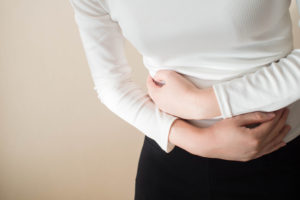Ovarian Cysts
Ovarian cysts are fluid-filled sacs—like any cyst that can form anywhere in our body. They can be found in the ovaries or on their surface. They are usually harmless and are not treated with medication as they go away on their own.
Most common types of cysts:
Follicle Cysts: Formed during ovulation, as ovaries prepare to release the egg; the egg grows inside a follicle, which is a tiny sac. When the egg is ready, the follicle opens to release it. However, if the follicle doesn’t break open, then it continues to grow and becomes a follicle cyst.
Corpus Luteum Cysts: After a follicle has released the egg, it usually shrinks back to its normal size and produces hormones for the next menstrual cycle. At this stage, it’s a mass of cells called corpus luteum. It is possible that the corpus luteum will not shrink once it releases the egg, in which case it builds up fluid and becomes a cyst.
Polycystic Ovary Syndrome: This occurs when there are many small cysts found on the ovaries, which can potentially cause problems with getting pregnant.
Cystadenomas: Formed on the surface of an ovary and may be filled with a watery or mucous fluid; they can sometimes become large.
What causes them?
Hormonal Problems: Most cysts form as a result of the menstruation cycle, and they go away on their own after 1-3 months, or in the case of corpus luteum cysts after a few weeks. If you have hormonal problems or use drugs for ovulation, these may cause more ovarian cysts to appear.
Endometriosis: Endometriomas can form as a result of endometriosis, which is a condition causing uterine endometrial cells to form outside the uterus. In this case, the tissue can attach to the ovaries and form a growth.
Pelvic Infection: Severe pelvic infections can spread to the ovaries and fallopian tubes and create cysts.
Pregnancy: Dermoid cysts come from cells present at pregnancy called embryonic cells. They can sometimes contain skin, hair, or teeth and are also called teratomas. However, they are rarely cancerous.
What are the symptoms?
Most ovarian cysts do not create any noticeable symptoms, especially since they form as part of the normal menstrual cycle. However, large ovarian cysts or a cyst that has ruptured may cause:
- Pelvic pain
- Bloating
- Heaviness in your abdomen
- Sudden, severe pain
- Nausea and vomiting
- Pain during menstruation and/or during sex
- Unusual vaginal bleeding
- Needing to urinate more often

